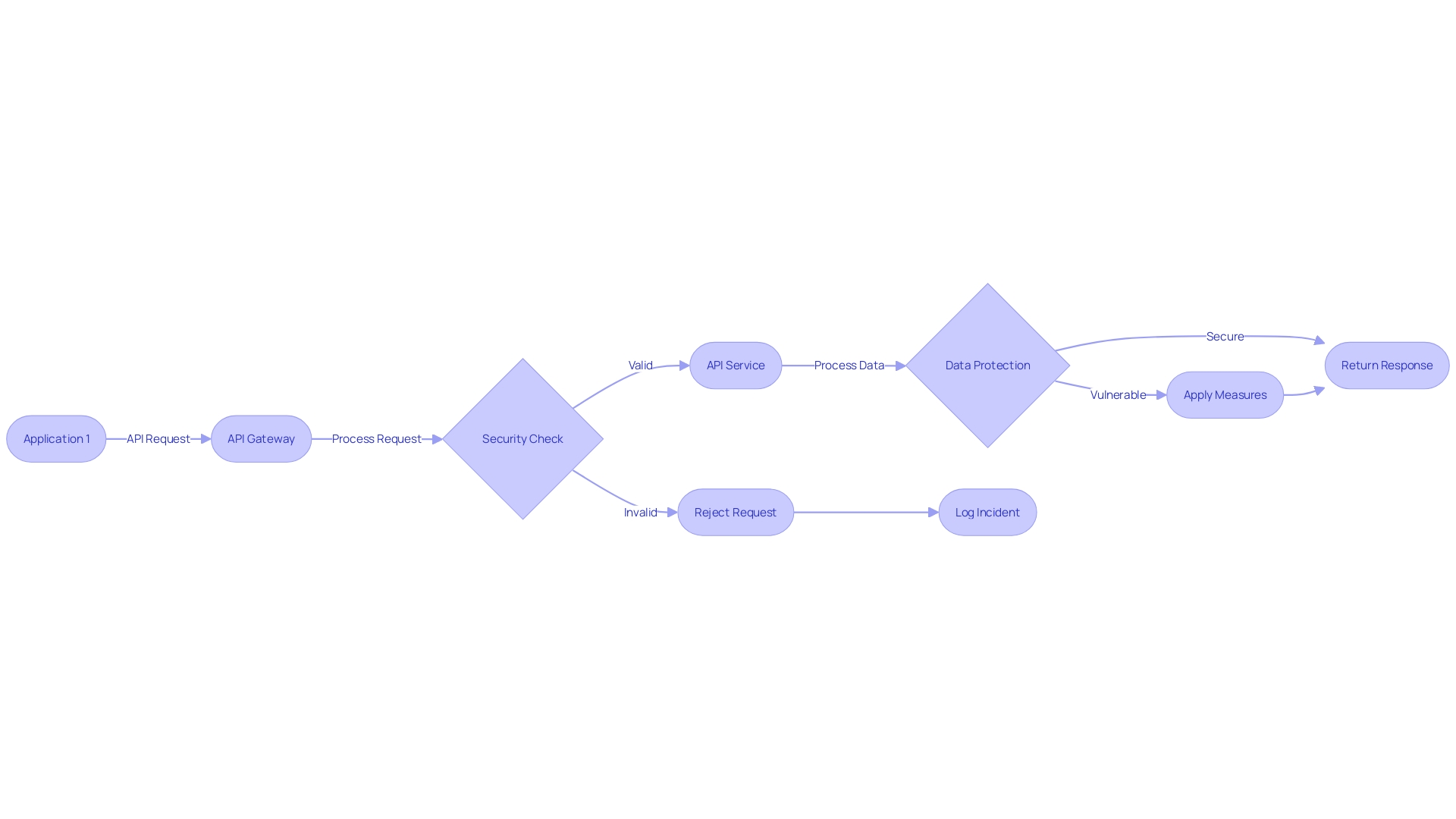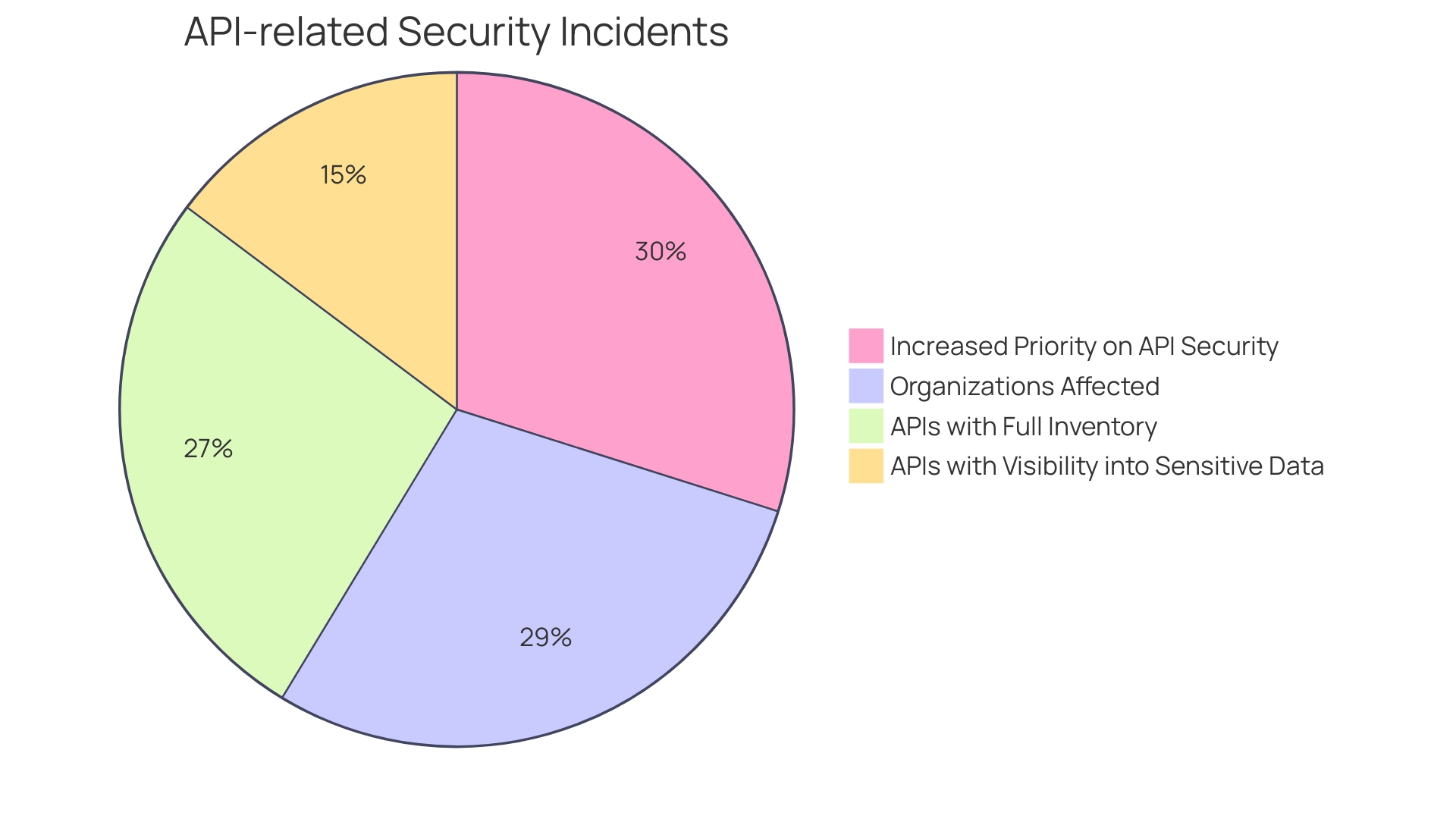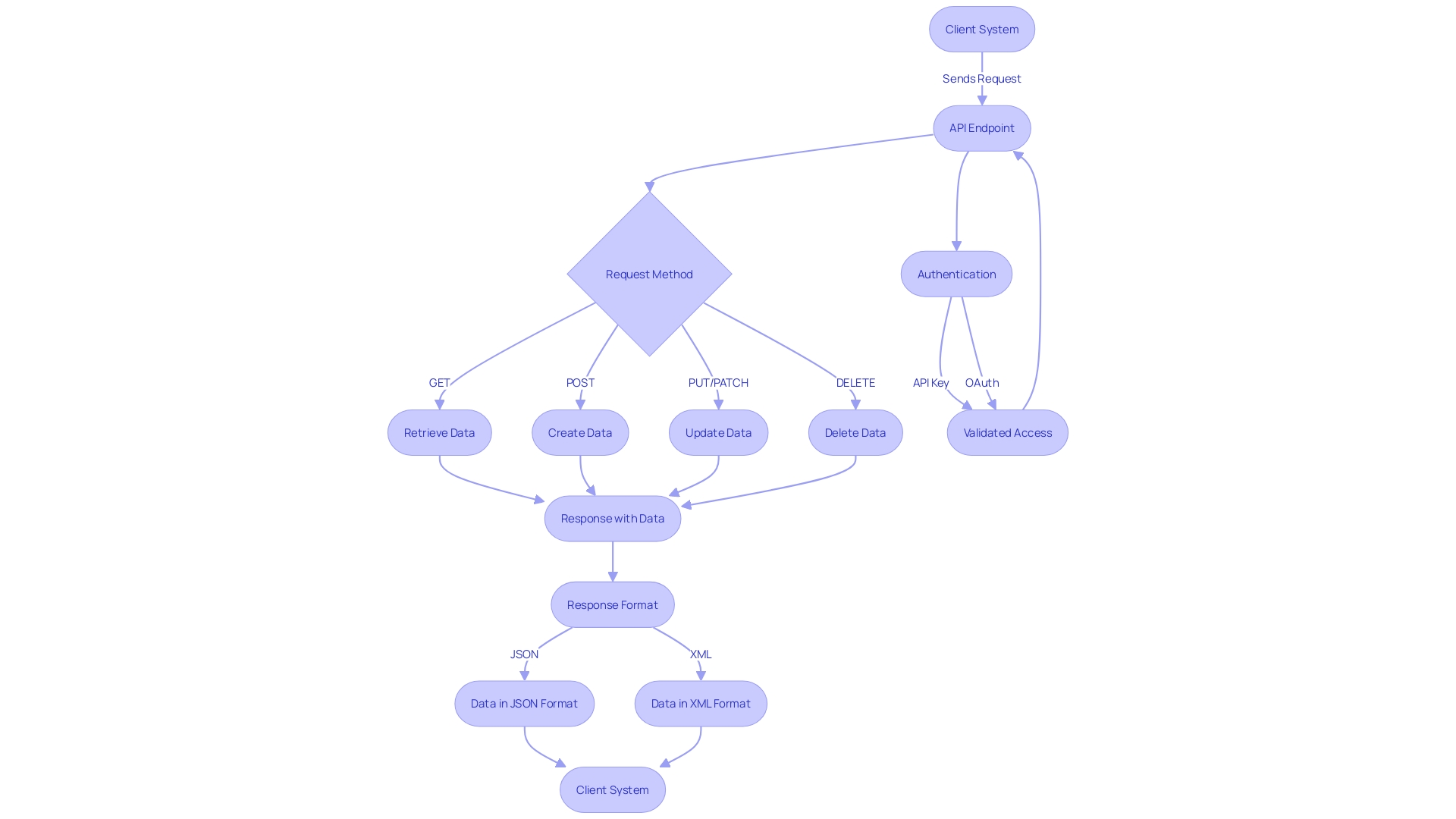Introduction
APIs, or Application Programming Interfaces, play a crucial role in modern software development by enabling applications to interact seamlessly and leverage functionalities of other services. This article explores the significance and benefits of using open APIs, focusing on the outcomes achieved through the use of Kodezi. Open APIs have revolutionized industries such as healthcare, fast-food chains, and budgeting apps, streamlining processes and improving the quality of services.
However, with the rise of APIs comes the need for robust security measures to protect sensitive data. The article also delves into the key components of open APIs, highlighting the importance of endpoints, request methods, parameters, response formats, and authentication mechanisms. By understanding these components, developers can effectively utilize APIs and create secure and efficient applications.
The article concludes by discussing the benefits of using open APIs, including innovation, scalability, customization, and time and cost savings. Overall, open APIs have become the foundation for enhancing digital capabilities, fostering innovation, and maintaining a competitive edge in today's rapidly evolving digital landscape.
What is Open API?
APIs, or Application Programming Interfaces, are the cornerstone of modern software development, offering a set of protocols and tools that enable diverse applications to interact seamlessly. They serve as a bridge, allowing software to access and leverage functionalities of other services, which is pivotal for creating innovative applications and ensuring system integration.
Consider the case of GitHub, the world's largest developer platform. GitHub has made significant strides in enhancing its API documentation to support the vast functionalities it offers. They transitioned from static sites to a dynamic application, emphasizing data-driven documentation and employing JSON for content management and platform intercommunication.
In another example, YNAB, a budgeting app, faced challenges in giving users a unified financial picture due to disparate accounts spread across institutions. A robust API strategy could facilitate clearer financial overviews by interfacing with various financial services.
Moreover, APIs have evolved to be more crucial than ever, with big data and emerging technologies underscoring their significance in fostering collaboration and innovation. Google even refers to APIs as the 'crown jewel of software development,' and with good reason. APIs enable developers to build more complex applications, acting as the 'middleman' that translates and facilitates communication between software programs.
As we embrace an 'API-first' development approach, this orientation highlights the importance of APIs in the early stages of application design, focusing on consistency, reusability, and quality. This strategy leads to broader adoption, developer friendliness, and compatibility, ensuring that applications can easily integrate with a wide range of systems.
To truly understand the impact of APIs, one must acknowledge their omnipresence in the digital world and their role as enablers of connectivity and system workflows. They are not just the technical infrastructure but also the strategic assets that drive innovation and operational efficiency in software development.

History and Evolution of Open API
Open APIs have revolutionized the way technology companies, from healthcare to fast-food chains, interact with their services and customers. Take Summer Health, for example, which improved pediatric care by streamlining the process of creating medical visit notes—a task that consumed over half of medical care providers' administrative time. By leveraging open APIs, they were able to enhance the quality of care and reduce the time spent on administrative tasks.
Similarly, Chick-fil-A encountered an API Contract problem when their internal teams struggled with explicit, well-documented contracts for their APIs, which impacted the collaboration between teams. The resolution of this issue was pivotal in simplifying interactions with their APIs, which are integral to operations such as processing orders through to their Point-of-Sale system.
Meanwhile, GitHub's internal organization, which includes the Docs team, showcased the significance of maintaining exemplary documentation at docs.github.com. This attention to documentation supports developers and organizations in building and deploying secure software effectively.
The importance of open APIs extends beyond individual companies to the global economy. APIs act as the connective tissue of the digital world, enabling experiences that are not just convenient, but also drive business and technology forward. The 2023 API Impact Report highlights this, showing how APIs underpin the digital experiences integral to our global economy.
However, with the rise of APIs comes an increased risk of security breaches. A staggering 60% of organizations experienced an API-related breach in the past two years, with 74% facing multiple incidents, according to a Traceable AI report. This highlights the need for a robust focus on API security to protect sensitive data and prevent fraudulent activities.
To build lasting technology that truly meets customer needs, it is crucial to focus on the 'needs' versus 'wants', as gleaned from industry experts. This involves understanding and addressing the multiple needs of various customers, rather than fulfilling single, isolated desires.
In a rapidly evolving digital ecosystem, questions arise about what data and APIs are available, who the providers are, and the regulations and standards that govern their use. Businesses must consider these factors, along with potential partnerships and the reliability of marketplaces and tools within the ecosystem.
As we continue to rely on open APIs, it is vital to maintain visibility and update open source components regularly, especially those that are frequently targeted by attackers. Organizations are advised to prioritize creating a Software Bill of Materials (SBOM) to manage open source risks effectively, as recommended by the 2024 OSSRA report.

Key Components of Open API
Open APIs serve as the critical infrastructure for modern software applications, acting as conduits for seamless communication between systems. At the heart of an API lies its structure, comprising various elements that facilitate this interaction.
Endpoints are akin to specific addresses on the internet - unique URLs where the API's services and resources are available. Each endpoint is designed to perform a particular function or deliver a specific resource, much like a distinct postal address leads to a particular location.
The actions that can be carried out via an API are defined by the request methods, which include commands such as GET, POST, PUT, and DELETE. These methods correspond to various operations that can be performed on the data, akin to different services offered at a post office.
Parameters are akin to the additional details you provide when sending a letter or package, such as the address or type of delivery service. In the context of APIs, they customize the request to fetch tailored information or modify the behavior of the API.
The format in which APIs respond is crucial, with JSON and XML being the most prevalent. This response format ensures that the data returned is structured in a way that can be easily interpreted and utilized by the requesting application.
Finally, authentication mechanisms serve as the gatekeepers, ensuring that only authorized users gain access to the API's resources. Methods like API keys and OAuth act as credentials, verifying the identity of the requester, much like showing ID before receiving a package.
Understanding these components is akin to reading a user manual that comes with new electronics, explaining how to operate them and harness all their features. API documentation, therefore, serves as the manual for developers, providing the necessary guidance and instructions for effectively utilizing APIs. As reported in recent cybersecurity incidents, 78% of teams have encountered API-related security issues, underscoring the necessity for robust authentication measures to safeguard sensitive data and maintain efficient operations.
With the rise of API breaches due to inadequate security, it's clear that APIs are more than just technical tools; they are foundational to the safety and functionality of modern digital landscapes. As such, comprehending the structure and security of APIs is not just beneficial but essential for developers who wish to create secure and efficient applications.

Benefits of Using Open API
Open APIs have revolutionized the way developers and businesses approach application development and digital integration. They serve as pivotal conduits that empower innovation, foster scalability, and offer customization, ultimately leading to significant time and cost savings.
The Bosch SOFC system exemplifies the innovation unlocked by open APIs. By providing a digital twin accessible via APIs, it allows users to monitor and optimize the system's performance, proving that open APIs can significantly enhance the efficiency and sustainability of energy production.
TotalEnergies Digital Factory's deployment of over 80 digital solutions across 25 countries, powered by API integration, underscores the critical role of APIs in modernizing legacy systems and catalyzing the digital transformation of businesses.
Lindy's AI assistants, which integrate with a broad network of apps and services through APIs, demonstrate the scalability that APIs provide. This has enabled Lindy to offer a wide range of automated tasks, bypassing the time-consuming process of developing integrations from scratch and speeding up the time-to-market.
Adoption of the API-first approach to app development has been a game-changer, ensuring accessibility, developer-friendliness, and compatibility. It is now more crucial than ever to have well-designed APIs that can accommodate the wealth of information from big data and the emergence of new technologies.
However, challenges remain, as noted in the technical disadvantages of Spotify's Backstage, where issues such as fixed data models and manual data ingestion can introduce inefficiencies in API development and maintenance.
In the words of industry experts, 'The ability to integrate with external services is not just a luxury—it's often a necessity.' APIs, like those used by Aiven to host data services at scale, have become the cornerstone of software development, facilitating the creation of more complex and powerful applications.
The extensive use of open source code in today's applications, as highlighted in the OSSRA report, further emphasizes the importance of APIs in managing the software supply chain and mitigating associated risks through automated security testing.
In conclusion, the transformative power of open APIs is evident across various industries, enabling businesses to enhance their digital capabilities, foster innovation, and maintain a competitive edge in the rapidly evolving digital landscape.
Conclusion
Open APIs have revolutionized industries, improving services and streamlining processes. Robust security measures are crucial to protect sensitive data. Understanding key API components, such as endpoints, request methods, parameters, response formats, and authentication mechanisms, is essential for developers to create secure and efficient applications.
Open APIs offer benefits like innovation, scalability, customization, and time and cost savings. They empower businesses to enhance digital capabilities, foster innovation, and maintain a competitive edge. By integrating with external services and managing the software supply chain, open APIs enable the creation of complex applications.
However, prioritizing API security is vital to prevent data breaches and fraudulent activities. Organizations must maintain visibility, update open source components, and implement strong authentication measures.
In conclusion, open APIs have become the foundation for enhancing digital capabilities, fostering innovation, and maintaining a competitive edge. By using open APIs effectively and implementing robust security measures, businesses can achieve maximum efficiency and productivity.
Frequently Asked Questions
What is an Open API?
An Open API is a set of protocols and tools that enable different applications to interact seamlessly. They act as a bridge that allows software to access and leverage the functionalities of other services.
Why are APIs considered important in software development?
APIs are crucial because they enable developers to build more complex applications by acting as a 'middleman' that translates and facilitates communication between software programs. They foster collaboration, innovation, and integration in the digital world.
How have APIs evolved over time?
APIs have transitioned from static sites to dynamic applications, with an emphasis on data-driven documentation and improved security. They have become strategic assets that drive innovation and operational efficiency in software development.
What are some examples of how APIs have been used by companies?
GitHub has enhanced its API documentation to support its functionalities. YNAB uses APIs to give users a unified financial picture. Summer Health improved pediatric care by streamlining administrative tasks with APIs, and Chick-fil-A solved API contract problems to enhance operations.
What is the significance of an 'API-first' development approach?
The 'API-first' approach prioritizes the importance of APIs in the early stages of application design, focusing on consistency, reusability, and quality. This leads to broader adoption, developer friendliness, and easy integration with various systems.
What security concerns are associated with APIs?
A significant number of organizations have experienced API-related security breaches. There is an increased risk of security breaches that necessitate a robust focus on API security to protect sensitive data and prevent fraudulent activities.
What are the key components of an API?
The key components include endpoints (unique URLs for API services), request methods (like GET, POST, PUT, DELETE), parameters (to customize requests), response format (usually in JSON or XML), and authentication mechanisms (like API keys or OAuth).
Why is API documentation important?
API documentation serves as a manual for developers, providing necessary guidance and instructions for effectively utilizing APIs. It is essential for understanding how to operate APIs and integrate them securely and efficiently into applications.
What are the benefits of using Open APIs?
Open APIs empower innovation, foster scalability, offer customization, and lead to time and cost savings. They enable the digital transformation of businesses, streamline development processes, and enhance digital capabilities across industries.
What challenges are associated with API development?
Challenges include issues like fixed data models and manual data ingestion, which can introduce inefficiencies. It is also crucial to manage the software supply chain and mitigate risks associated with open source code through automated security testing.




